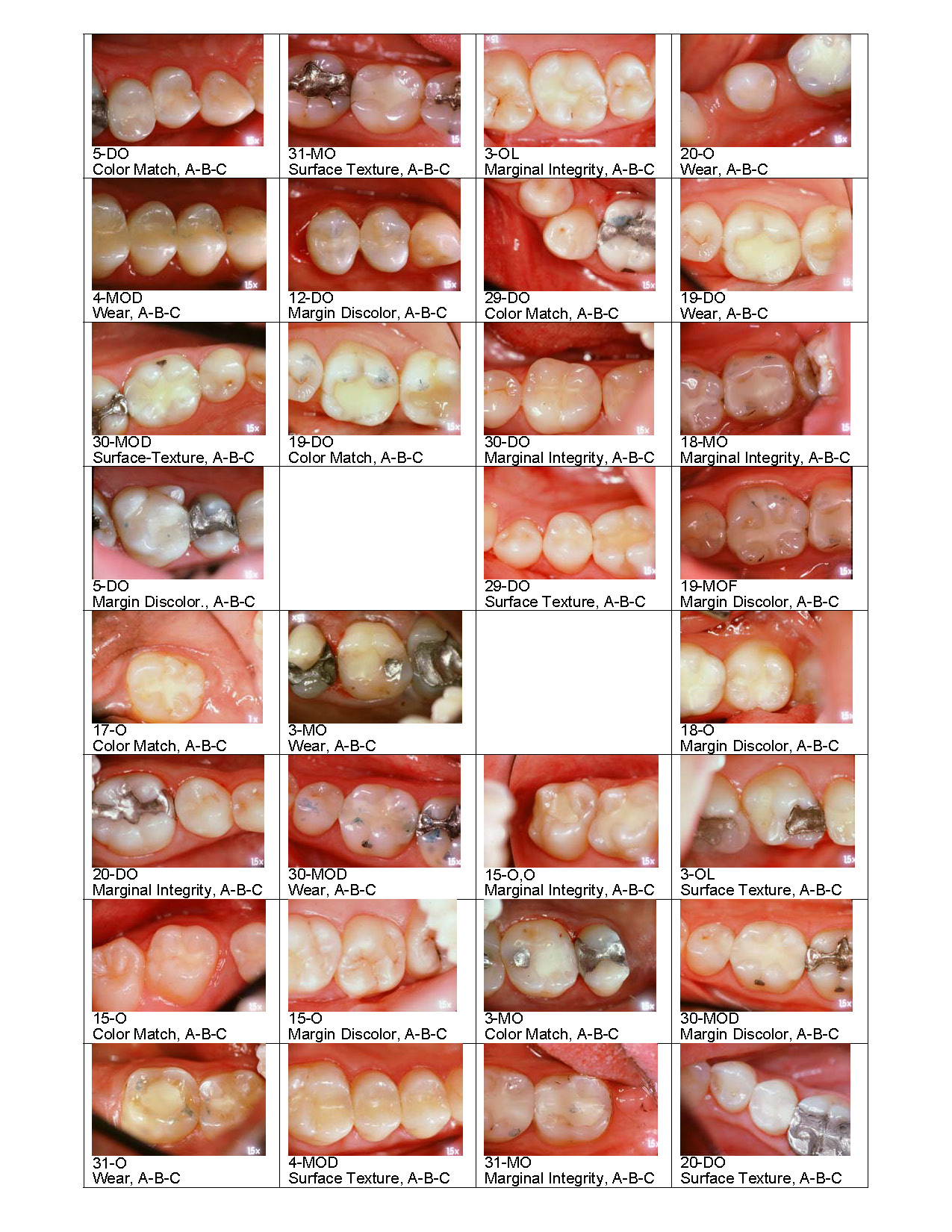 |
 |
 |
 |
Magnification Effects on Visual Ratings by Clinical Research Investigators
|
A. RAJAN, P.A. BAUER, J.L. VIVAS, M.E. MCLEAN, M. FITZGERALD, M.C. PETERS, and S.C. BAYNE, University of Michigan, Ann Arbor, USA | Click on images to view full size. Introduction: An open-access online calibration system for clinical research investigators (http://www.dent.umich.edu/CER/) was launched in 2006. A vexing question persisted about potential on-screen magnification effects on visual rating assignments.
Objective: Evaluate magnification effects on visual ratings of 5 USPHS categories by 5 trained clinical evaluators using color images of restorations.
Methods: Clinical evaluators (full-time calibrated clinical research faculty; n=5) were challenged with visual ratings (A= clinically excellent; B= clinically acceptable; C= clinically unacceptable) for 6 color printed images for each of 5 USPHS categories at 3 magnifications (1.0x [none, see attachment], 3.4x [loupes], 6.4x [large computer-screen image]) with 24h elapsed times between magnification tests. Results (N=30x3x5) were analyzed in terms of (1) evaluator agreement with historical ratings as “shifts/directions” (e.g., A-to-B= +1, C-to-B= -1) and (2) pooled agreement (evaluators and categories) among magnifications (ANOVA, p≤0.05). | | Evaluator Agreement (n=30/category) | Pooled (n=180)
Agreement (%) | | | Pooled Rating Shifts (X±sd) | Mag | Anatomic
Form | Color
Match | Margin Dis-
coloration | Marginal
Integrity | Surface
Texture | All USPHS
Categories | 1.0x | –0.07±0.45a | +0.13±0.35a | –0.37±0.56a | –0.07±0.69a | –0.30±0.53a | 70±10A | 3.3x | –0.13±0.35a | +0.07±0.52a | –0.10±0.61a | –0.03±0.67a | +0.13±0.35a | 75±11B | 6.4x | –0.07±0.37a | +0.23±0.43a | +0.10±0.55a | +0.17±0.46a | +0.20±0.41a | 78±15BC | Results: No differences arose for evaluators (not shown) or categories (see small-letter superscripts across rows), so all USPHS values were pooled. Minor shift ratings occurred among categories at each magnification but were not statistically different (p>0.05). Pooled USPHS results were small but different (p=0.02, see capital-letter superscripts). The largest gain in agreement between different magnifications was achieved with loupes (3.3X).
Discussion: The principal advantage for clinical research is that ratings are only “marginally influenced” by magnification. This facilitates clinical research in large networks where clinicians vary in trusted magnification level.
Conclusion: Within boundaries of trained/calibrated clinical faculty for 5 USPHS categories selected, only minor magnification effects occurred.
Acknowledgment: Supported in part by CRLT Whitaker Grant (U-M) and Dentsply-Caulk.
| | Seq #258 - Assessment of Devices and Dentifrices
9:00 AM-10:30 AM, Saturday, July 5, 2008
Metro Toronto Convention Centre Room 803B |
|
Back to the Dental Materials 4: Clinical Trials, Biocompatibility and Biologic Effects Program
|
|
